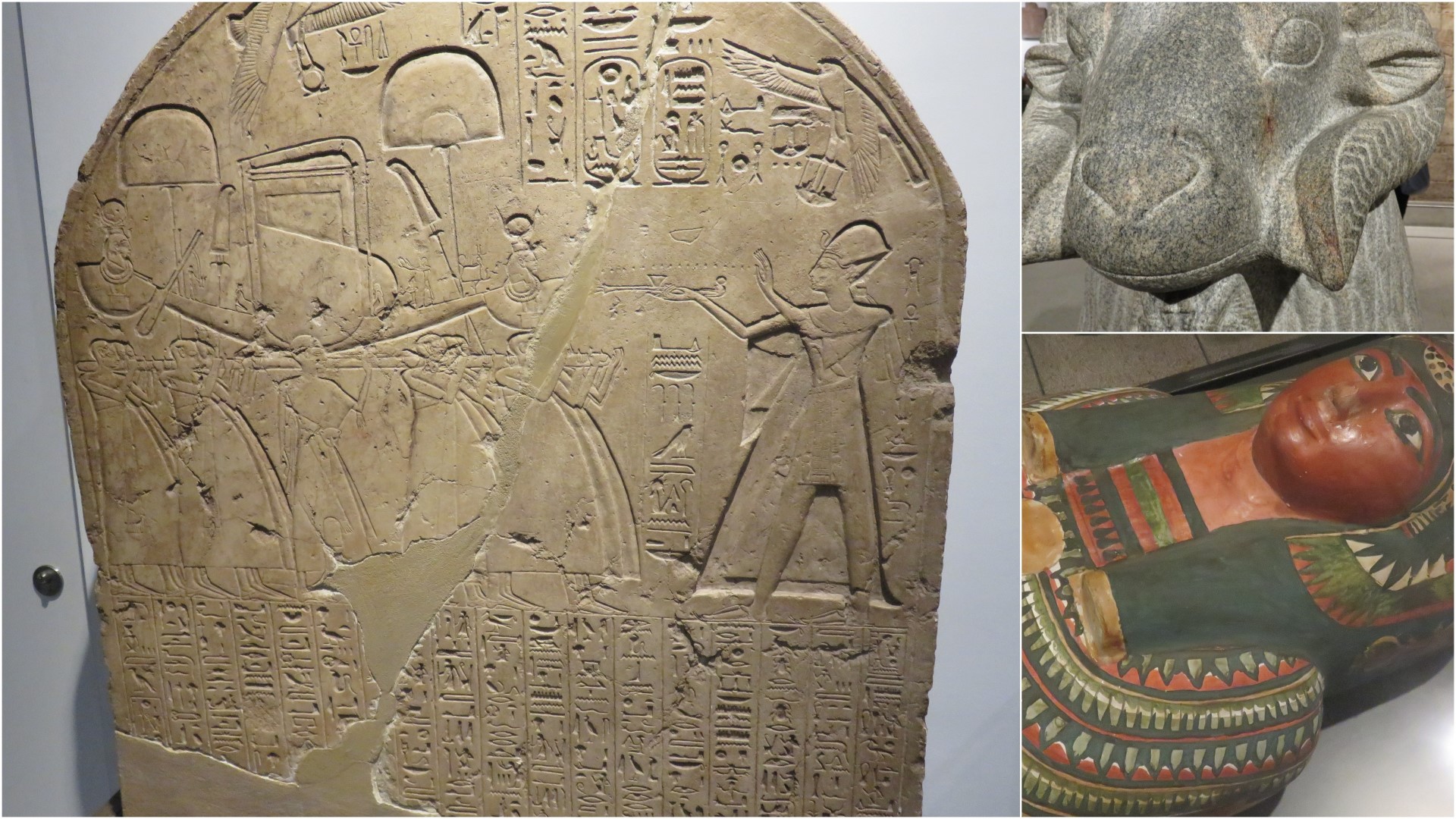Ashmolean Museum, Oxford.
Left: “Limestone stela dedicated to Isis. (King Ramesses II – about 1290-1224 BC – offers incense before the sacred barque of Isis.)”
Top right: Granite gneiss ram of Amun. “At least three Ancient Egyptian granitic gneiss statues of Amun in the form of a ram protecting King Taharqa were displayed at the Temple of Amun at Kawa in Nubia. Construction of the stone temple was started in 683 BC by the pharaoh Taharqa. The ram is one of the animals sacred to Amun, and several temples dedicated to Amun, including the one at Karnak featured ram or ram-headed sphinx statues.”
Bottom right: “Meresamun (‘Amun Loves Her’) was an ancient Egyptian singer-priestess in the inner sanctum at the temple in Karnak. The ancient Egyptians believed that a person’s name must be preserved in order for them to survive for eternity.”
